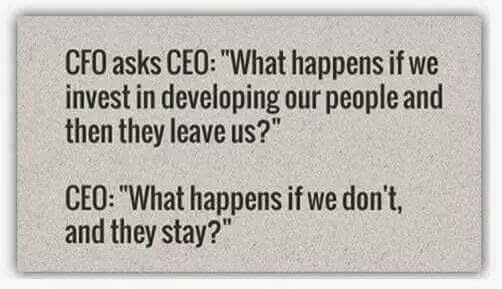It is this exercise – to measure the sales force appropriately –
that has the potential to break or make an organization. There are a few
aspects of business that is standard regardless of size and revenue of the
company and the industry it belongs – one of them is the measurement system for
sales team. The sales lead has a huge pressure to explain and justify costs
involved in sales if the revenue is not generated as expected, deals not won as
assured.
 |
| Image Credit: LinkedIn Web |
Measuring Outcomes
This huge dependency on the sales team to actually bring in the
revenue makes this measurement exercise all the more crucial – This in turn
brings the eternal question regarding what should be truly measured – Is it
their efforts or results? There are unforeseen factors in sales, unpredictable
situations depending upon client’s eco system and their priorities that can
lead to orders slipping to the next quarter or getting cancelled or lost to
competition. Is it fair to question a sales person’s efficiency in such cases
where the effort was more than hundred percent and track record of the sales person only substantiates this was
one off case.
To avoid attrition, it is important to measure efforts along with
outcomes. However, having said that, check credibility of the sales resource
first – how often is it the same reason for an order loss? He either needs to
have a plan B for revenue or another job every quarter. Did the sales training
module address that?
Measuring Efforts
The flip side of measuring only efforts – how many leads created,
how many proposals sent, how many client relationships built, how many
conversions to next level – None of this brings
in the real cash home – just a lengthy pipeline and a future of prospects with
nothing concrete in hand at the moment.
Measuring results counts. Again, if a sales resource picks three
orders from different accounts worth a
million dollar and another closes just one deal for approximately two million
dollars – is it fair to measure just revenue (outcome) and not efforts?
Stakeholder and expectation management in case of the former order must have
been ten times more difficult. Did you
sales training take into account how to precisely measure efforts?
Key Result Area
Ideally sales people’s key result areas should be a
combination of several factors. Target revenue every quarter, new client acquisition, efforts put in to create new opportunities and
leads. Most sales people do not have a plan B pipeline for every month. The old
saying POP: Perform or Perish still holds true. A sales professional’s daily
activities are categorized – efforts for today’s order, tomorrow’s order and day after tomorrow’s order – In this manner an
order can slip to next week, not next quarter. Yes, I am aware of the rationale
and logic behind orders that take months to convert, get the drive – the shift
can be from this week to next week, not next year. Expecting last minute changes
should be accommodated in sales training
Measuring
Achievements
If the sales team is gauged based on short term and
long-term achievements – keeping a balance of efforts and outcomes, it will be
fair to both the sales professional and the sales lead – to justify cost on
sales and the flow of revenue without rigorous vigilance. As the sales resource
cannot be singing the past glory always – his action plan automatically
gets aligned to the measurement criteria – to address both
outcomes achieved and efforts put in. A robust reporting system should capture
all of this for MIS and measurement.
Reports carrying time spent with client, writing mails to build
client relationship or introducing company, making those important sales calls,
wait time before the meeting, traveling to client’s location, preparing reports
etc should be discouraged, as if there is no revenue after all this, all of
this is child’s play- a very expensive child’s play.
Sales training based on BECKON Model is a thorough assessment of
your resources first, before we sign up to change their future in sales.
This is an edited version of what was originally published by Triond



